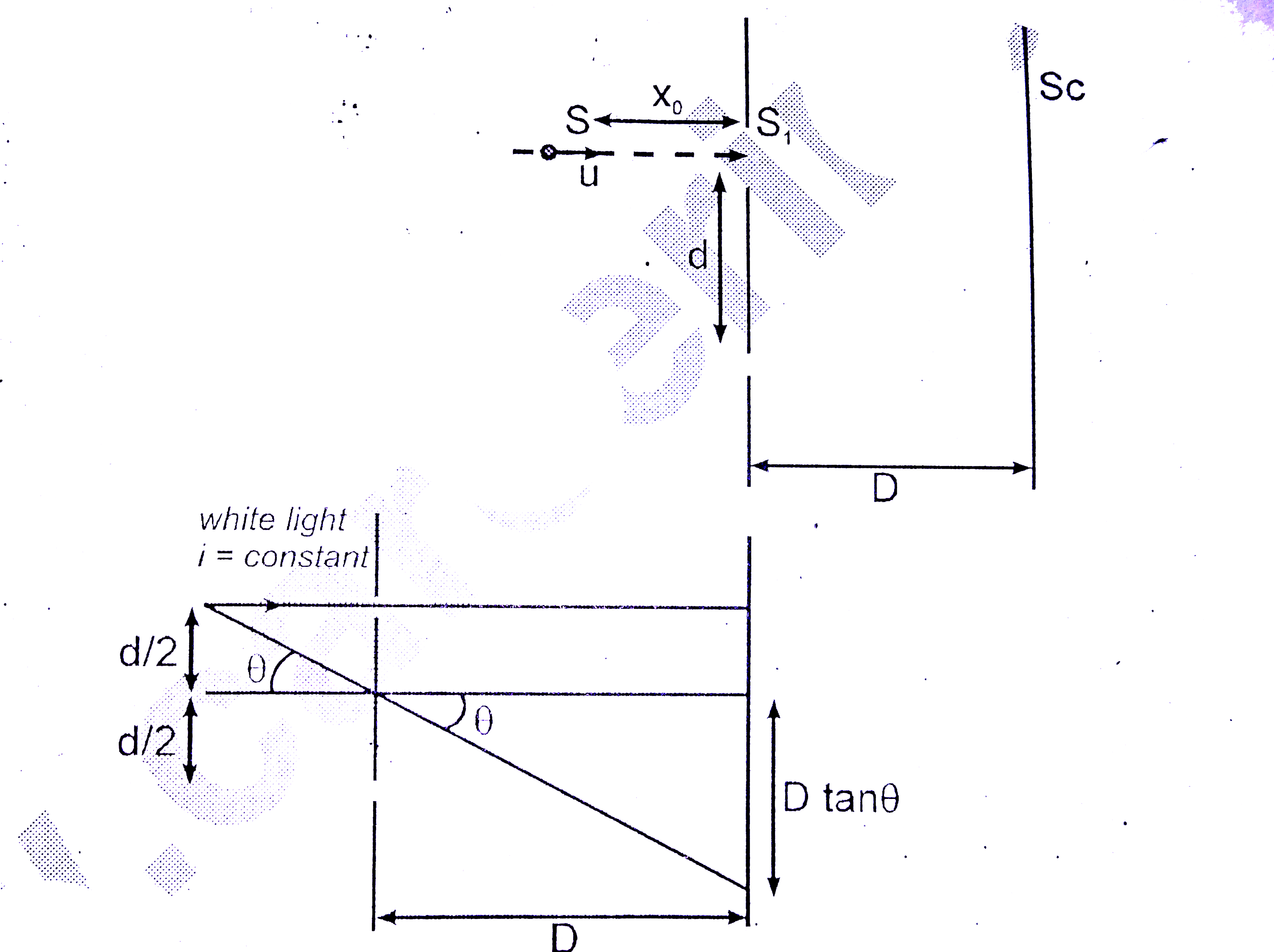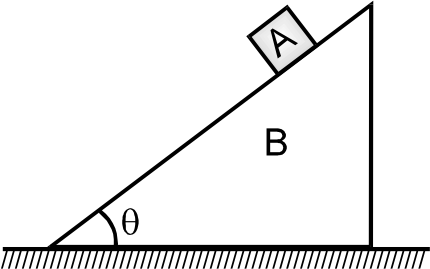In the figure shown if a parallel beam of white light is incident on the plane of the slits then the distance of the white spot on the screen from O is [Assume <<D,λ<<d]
![In the figure shown if a parallel beam of white light is incident on the plane of the slits then the distance of the white spot on the screen from O is [Assume lt lt D, lambda lt lt d]](https://d10lpgp6xz60nq.cloudfront.net/physics_images/MOT_CON_JEE_PHY_C21_E03_023_Q01.png)
The correct Answer is:d/6
Step by step video & image solution for In the figure shown if a parallel beam of white light is incident on the plane of the slits then the distance of the white spot on the screen from O is [Assume lt lt D, lambda lt lt d] by Physics experts to help you in doubts & scoring excellent marks in Class 12 exams.
Updated on:21/07/2023Topper's Solved these Questions
- WAVE OPTICS BOOK - MOTIONCHAPTER - WAVE OPTICS EXERCISE - EXERCISE - 3 (Level - II) (Subjective | JEE Advanced) Section A - Interference Problems + Wavefronts & Hugen’s Principle
4 Videos
- WAVE OPTICS BOOK - MOTIONCHAPTER - WAVE OPTICS EXERCISE - EXERCISE - 3 (Level - II) (Subjective | JEE Advanced) Section B - YDSE Experiment
5 Videos
- WAVE OPTICS BOOK - MOTIONCHAPTER - WAVE OPTICS EXERCISE - EXERCISE - 3 (Level - I) (Subjective | JEE Advanced) Section A - Interference Problems + Wavefronts & Hugen’s Principle
6 Videos
- WAVE MOTION BOOK - MOTIONCHAPTER - WAVE MOTION EXERCISE - Exercise - 3 Section - B (Previous Years Problems)
7 Videos
- WAVESBOOK - MOTIONCHAPTER - WAVESEXERCISE - EXERCISE -4 (Level -II) (previous year JEE Advanced)
10 Videos
Similar Questions
In the figure , if a parallel beam of white light is incident on the plane of the slits S1andS2 then the distance of the nearest white spot on the screen from O is [ Assume D>>d,d>>λ ]

View SolutionIn the figure, if a parallel beam of white light is incident on the plane of the slits S1&S2 then the distance of the nearest white spot on the screen from O is dk. Find k [Assume D>>d,d>λ].
'(##CEN_KSR_PHY_JEE_C27_E01_034_Q07##)'
View Solution
Knowledge Check
In figure, if a parallel beam of white light is incident on the plane of the slit, then the distance of the nearest white spot on the screen form O is [assume d<<D,λ<<D]
 A0Bd/2Cd/3Dd/6
A0Bd/2Cd/3Dd/6In YDSE,D=1m,d=4mm and λ=12mm in the figure shown, a parallel beam of light is incident on the plane of the slits of YDSE. Light incident on the slit s1, passes through a medium of variable refractive index μ=(2x+1) (where x is the distance from the plane of slits in mm) up to a distance l=1mm before falling on s1. Rest of the space filled with air. Then choose the correct option (s):
 APosition of central brigh fringe is at a distanc y=1√3m above the central lineBPosition of central bright fringe is at a distance y=12m above the central lineCNumber of maxima obtaining on the screening is 7DNumber of maxima obtaining on the screening is 8
APosition of central brigh fringe is at a distanc y=1√3m above the central lineBPosition of central bright fringe is at a distance y=12m above the central lineCNumber of maxima obtaining on the screening is 7DNumber of maxima obtaining on the screening is 8In figure, parallel beam of light is incident on the plane of the slits of a Young's double-slit experiment. Light incident on the slit S1 passes through a medium of variable refractive index μ=1+ax (where 'x' is the distance from the plane of slits as shown), up to distance 'I' before falling on S1. Rest of the space is filled with air. If at 'O' a minima is formed. then the minimum value of the positive constant a (in terms of l and wavelength λ in air) is
 AλlBλl2Cl2λDnone of these
AλlBλl2Cl2λDnone of these
In the figure shown S is the saurce of white light kept at a distance x0 frorn the plane of the slits. The source moves with a constant specd u towards the slits on the line perpendicular to the plane of the slits and passing through the slit S1. Find the instanteneous velocity (magnituce and direction). of the central maxima at time t having range 0≤t<<x0−du. Assume that D>>d.

View SolutionIn a Young's double slit experiment, the slit separation d is 0.3 mm and the screen distance D is 1 m. A parallel beam of light of wavelength 600 nm is incident on the slits at angle as shown in figure. On the screen, the point O is equidistant from the slits and distance PO is 11.0 mm. Which of the following statement(s) is/are correct ?

View SolutionThe refractive index of light in glass varies with its wavelength according to equation
μ(λ)=a+bλ2 where a and b are positive constants.

A nearly monochromatic parallel beam of light is incident on a thin convex lens as shown. The wavelength of incident light is λ0±Δλ where Δλ<<λ0. The light gets focused on the principal axis of the lens over a region AB. If the focal length of the lens for a light of wavelength λ0 is f0, find the spread AB.
View SolutionThe order of energy of orbitals is s<p<d<f
View SolutionIn the figure shown , A and B are free of to move. All the surfaces are smooth. (0<θ<90∘)

View Solution
